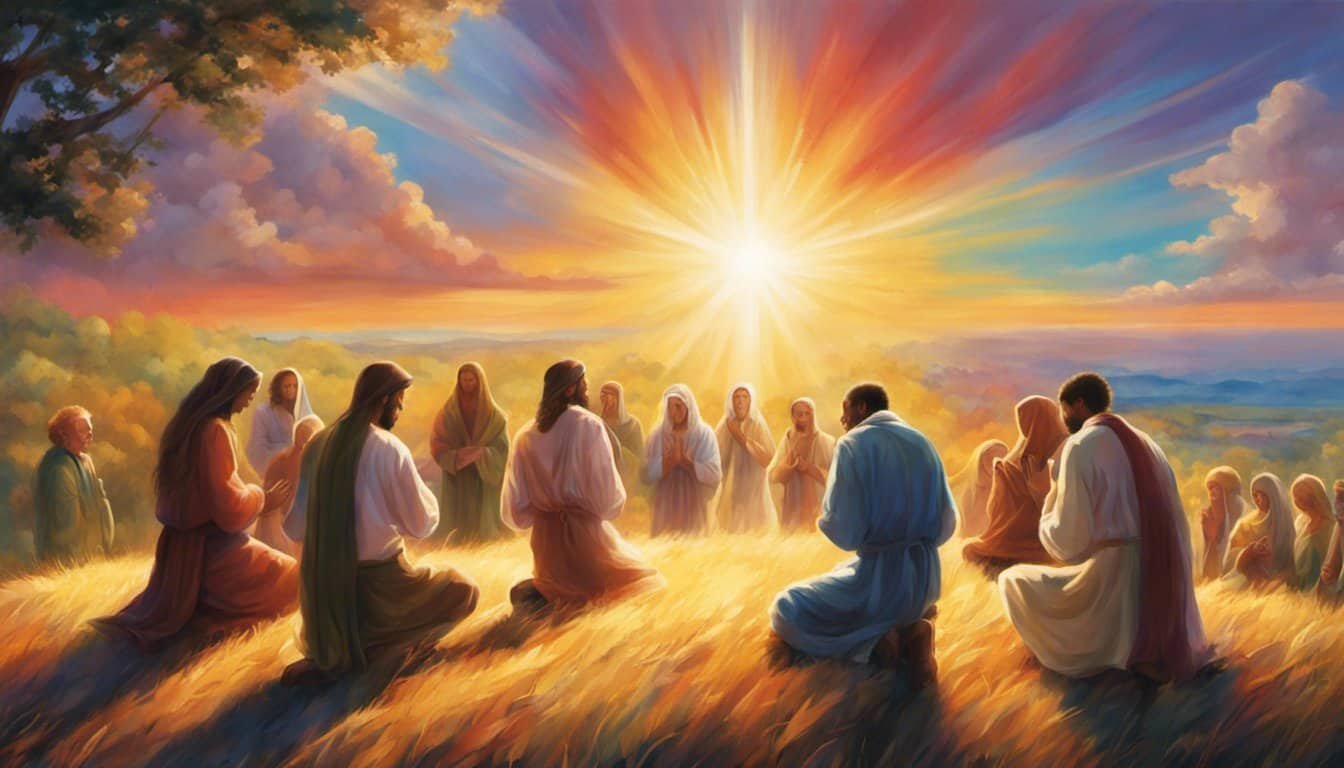When I first heard the term “Old Testament canon,” I was a bit puzzled. What exactly does it mean, and why is it important? The Old Testament canon refers to the collection of books that are considered divinely inspired and authoritative in Judaism and Christianity. These texts form the foundation of religious teachings and traditions that have shaped countless lives and cultures.
Understanding the Old Testament canon isn’t just for theologians or historians—it’s a fascinating journey into the roots of faith and the process by which these sacred texts were gathered and preserved. Whether you’re a believer, a curious skeptic, or someone who loves exploring ancient literature, delving into the Old Testament canon offers a unique glimpse into humanity’s spiritual heritage.
Understanding the Old Testament Canon
Definition and Significance

The Old Testament canon refers to the set of books that are recognized as divinely inspired and authoritative within Judaism and Christianity. These texts form the first part of the Christian Bible, which Christians call the Old Testament, and the Tanakh in Judaism. Their significance comes not just from their religious importance but their impact on culture, history, and literature. Understanding this canon helps one grasp the foundations of these faith traditions and their historical development.
Historical Development
The Old Testament canon didn’t just spring up overnight. Its development was gradual and complex. Different faith communities recognized various books over centuries. For example, the earliest parts, like the Pentateuch (the first five books), were established long before others, such as the Prophets and the Writings. Various councils and gatherings of religious leaders helped solidify which books were included in the canon. Understanding this history shows how these texts have been meticulously preserved and revered across generations.
Key Components of the Old Testament Canon

Understanding the key components of the Old Testament canon provides a deeper insight into its structure and the significant role each part plays. Let’s break it down.
Torah or Pentateuch
The Torah, also known as the Pentateuch, forms the foundation of the Old Testament. Comprising the first five books—Genesis, Exodus, Leviticus, Numbers, and Deuteronomy—these texts are essential. They lay out the creation story, the history of early humanity, and the laws given to the Israelites. For instance, Genesis starts with the creation and goes through the patriarchal narratives, whereas Leviticus details the various laws and rituals.
Prophets
The Prophets segment includes books divided into Former Prophets (like Joshua, Judges, Samuel, and Kings) and Latter Prophets (such as Isaiah, Jeremiah, Ezekiel, and the Twelve Minor Prophets). These books record Israel’s history from when they entered the Promised Land to their exile and eventual return. They also contain prophecies and visions that direct Israel and reveal God’s will. For example, Isaiah’s prophecies often foretell the coming of the Messiah, giving hope amidst turmoil.
Writings
The Writings or Ketuvim offer a rich array of books, including poetic literature, wisdom texts, and historical accounts. Psalms and Proverbs provide hymns and deep philosophical insights, while books like Ezra and Nehemiah detail the rebuilding of Jerusalem’s walls. The Book of Job explores profound themes of suffering and faith. Each book in this section adds unique perspectives and lessons.
By understanding these components, we can appreciate the diversity and depth of the Old Testament canon, seeing how each book contributes to the overall narrative and spiritual teachings.
Influence of the Old Testament Canon
The Old Testament canon profoundly impacts various aspects of religion and theology. Its collection of texts forms the backbone of religious practices and theological studies in Judaism and Christianity.
On Religious Practices
The Old Testament canon shapes numerous religious practices and traditions. For example, its laws and commandments are core elements of Jewish observances. The Sabbath, dietary laws, and various festivals like Passover and Yom Kippur, all stem from Old Testament teachings.
In Christianity, the Old Testament plays a crucial role in liturgical readings and sermons. The Psalms, for instance, are frequently recited in worship services. These ancient songs offer praise, thanksgiving, and petitions, enriching the spiritual lives of believers. Moreover, many churches observe Old Testament feast days, intertwining them with New Testament revelations to deepen their faith experiences.
In Theological Studies
The Old Testament canon serves as a foundational resource for theological studies, providing essential context and depth to understand the nature of God and his relationship with humanity. Scholars analyze its texts to uncover insights into God’s attributes, moral laws, and covenantal promises.
In particular, prophetic books like Isaiah and Jeremiah are pivotal in understanding messianic prophecies. These writings are often scrutinized to grasp the anticipatory references to Jesus Christ, bridging the Old and New Testaments. Historical books such as Kings and Chronicles give detailed accounts of Israel’s history, helping theologians trace the development of Jewish identity and religious thoughts.

Scriptural exegesis involves dissecting Old Testament passages to interpret meanings and applications accurately. This exegetical work influences doctrine formation and enriches personal Bible study, guiding believers in aligning their lives with divine principles.
The Old Testament canon’s influence permeates faith practices and academic inquiry, making it indispensable for any comprehensive religious and theological understanding.
Sure thing! Here’s an engaging article for “The Witness” by Adam Phillips.
Hey there, friends! It’s Adam Phillips here, your trusty youth pastor with over 20 years of experience in ministry. Today, we’re diving deep into a topic that’s often debated but crucial for understanding our faith: the Old Testament canon. Ever wondered why certain books made the cut while others didn’t? Or why there’s sometimes a bit of disagreement among different faiths? Let’s unpack this together.
Major Debates and Controversies
The formation of the Old Testament canon isn’t just a historical issue—it’s packed with debates that continue today.
Variations Across Different Faiths
Ever noticed that some Bibles have more books than others? That’s because different faith communities have variations in their Old Testament canons.
- Jewish Canon: The Jewish Bible, or Tanakh, includes 24 books. This canon was solidified around the 2nd century CE. They’re the same texts Christians have but grouped differently.
- Catholic Canon: Catholic Bibles include 46 books in the Old Testament. They accept books like Tobit, Judith, and the Maccabees, which aren’t in the Jewish canon.
- Protestant Canon: Protestant Christians stick to 39 books, aligning more closely with the Jewish canon but counted differently. Martin Luther, in the 16th century, argued for this count.
These differences stem from historical and theological stances, influencing how each faith practices and interprets scripture.
Canon Criticism and Modern Scholarship
Canon criticism is a field that looks into why some books were included in the Bible and others weren’t. Scholars dive into the historical context, authorship, and how these texts were recognized as authoritative.
- Historical Analysis: Scholars examine how historical events, like the Babylonian Exile, shaped the writing and compilation of these books. For instance, the book of Daniel reflects themes of perseverance and faith during the Exile.
- Authorship and Authenticity: Debates often arise over who wrote certain books. Take Isaiah, for example. Scholars argue parts of it were written by different authors over centuries.
- Theological Themes: The criteria for canonicity included consistent theological messages, like monotheism and covenant. Books that aligned with these core themes were more likely to be accepted.
Modern scholarship brings new insights but also stirs controversy. Some argue these studies undermine the traditional views, while others believe they enrich our understanding of scripture.
- Use Multiple Translations: Compare verses in different Bible versions. It helps catch nuances and understand better.
- Study the Context: Look at the historical and cultural backdrop of each book. Why was it written?
Conclusion
Understanding the Old Testament canon is like piecing together a fascinating historical puzzle. It’s clear that the formation of this sacred collection was a complex journey influenced by various faith communities and theological debates. The Old Testament continues to be a cornerstone for both Judaism and Christianity, offering a rich tapestry of stories, laws, and divine promises.

Exploring the different canons and the scholarly work behind them has deepened my appreciation for these ancient texts. It’s amazing how these writings have shaped religious thought and practice for millennia. I hope this exploration has sparked your curiosity and provided you with a deeper insight into the profound significance of the Old Testament canon.
Frequently Asked Questions
What is the Old Testament canon?
The Old Testament canon is a collection of books deemed sacred and authoritative in Judaism and Christianity. These texts were gradually recognized by different faith communities over centuries.
How did the Old Testament canon develop?
The development of the Old Testament canon involved recognition by various religious communities, decisions by councils, and religious gatherings over a long period.
Why is the Old Testament important in Judaism and Christianity?
The Old Testament shapes religious practices and theological studies in both Judaism and Christianity, offering insights into God’s attributes and covenantal promises.
What role did councils play in solidifying the Old Testament canon?
Councils and religious gatherings played a significant role in deciding which books should be included in the Old Testament canon, thus shaping its final form.
Are there differences in the Old Testament canon among various faiths?

Yes, variations exist across different faiths. For instance, the Jewish, Catholic, and Protestant canons have differences concerning which books are included.
What are some of the major debates surrounding the Old Testament canon?
Debates include issues of authorship, historical context, theological themes, and which texts should be considered canonical, especially across different faiths.
How do modern scholars study the Old Testament canon?
Modern scholarship involves canon criticism, examining historical events, the context of biblical texts, and the theological themes to understand the inclusion of certain books.
Why are multiple translations of the Old Testament used for study?
Multiple translations are used to gain a comprehensive understanding, as they provide different perspectives and insights into the context and meaning of the biblical texts.
What is canon criticism?
Canon criticism is the study of how and why certain books were included in the biblical canon, focusing on historical context, authorship, and theological themes.












